Lahaul & Spiti – Memories from the Mountain Country
Also see: our photography tour to Lahaul and Spiti in July/August every year.
Chatting with a very dominating Mangal Singh in a chai-shop in Manali, we were quickly convinced to let go of our plans of Ladakh and traverse the highlands of Lahaul & Spiti instead. Those were the days much before the famed movie ‘three idiots’ came out. Ladakh was not a rage as it now is, and people would ask you ‘where is it’ when you said ‘Ladakh’. But frequent travellers who pushed the limits of comfort knew much about its glorious landscapes and endless lakes. One summer, we decided it was time we traversed the Manali-Leh highway and experience what the heavens looked like. Until Mangal Singh came along and changed our plans. Thankfully so.
Chandar River is our constant companion for a good part of our journey into Lahaul & Spiti. I would call it grandest of all rivers. Not because it’s big or it’s fast, but it has chosen to flow in a valley of unparallelled beauty.
A good friend from Delhi had connected me with the genial driver Mangal who made a living driving a Tata Sumo in the mountains. We sat with him on a pleasant summer morning at an un-touristed dhaba in Manali and excitedly explained our plans for Ladakh: “we will go here, do that, see this and blah!’ And Mangal, in his ever-smiling and gently pushy manner, shook his head. You shall not do so! That day, he was going to call shots, not his customers. He slowly explained, delivering a series of logical reasons about why we should drop our plan to Ladakh and go to Spiti instead. “Ladakh is too expensive; it is very tiring; it is monotonous after sometime; Spiti is far more beautiful; far more rugged; has a greater variety..” We were sold.
It turned out, as we discovered over the next few days, that Mangal knew how to talk to anyone and have his word accepted unquestioned. And it also turned out that everything he said about Spiti was true. For the next seven days we were at the able hands of Mangal, negotiating some of the remotest roads in Lahaul & Spiti and always ending our days happy.
An unlikely summer snowfall had us elated on our journey to Lahaul. It also held us back and made us wait for the roads to be cleared and waiting was a pleasure in this land of extraordinary landscapes.
Mangal was not the kind of person who would give up on anything; it was not just about convincing his clients to travel to where he preferred, but also in ensuring that we see the best of what the region had to offer. “The road to Chandratal is closed,” a driver who was travelling in the opposite direction told us. After sweet-talking him and sending him off, Mangal scoffed at those words and said, “he did not want to drive to Chadratal and is now lying to us, with his clients sitting behind him.” And sure enough, the road was open and we were led there comfortably, under the guidance of the able and focused Mangal.
But we had trouble waiting for us on the way back from Chandratal. A sleek-looking Ford Endevor was punctured and blocked the single-lane road that connected the lake with rest of the world. A passenger from the car was frantically waving at us, asking us to wait till the tyre is replaced. But there is no stopping Mangal. He drove right ahead and parked in front of the broken car; inspected it and figured out that the city-slickers will take ages to finish changing the tyres. He immediately assigned himself to the job. In the ten minutes that we spent admiring the valleys and the mountains by the road, the Ford was on its way to the lake and we were on our way ahead.
It is useless to make an attempt to describe Chandratal in words. A picture helps, to some extent. A good way to understand its beauty is to be there and see it. The best way is to camp there and see it as the sun goes down, under the stars and as the sun comes up. Nothing can beat it.
This journey to Lahaul & Spiti, under our commanding officer Mangal was so memorable that Mangal became our hero. We would cherish those days of being in Spiti, each time remembering Mangal for having made this happen. This was in the year 2006, when regular travel and photography was just unfolding as a popular pastime and a serious hobby.
I was back in Spiti again in 2011, guiding a bunch of photography enthusiasts who had seen my images from the last tour (more about this tour – Lahaul & Spiti, Heart of the Himalayas). We did not have Mangal this time, for the only reason that we opted for more modern and comfortable vehicles that came into existence since our last tour. This time, we had a local – Lara – who was simply ‘the man’ to rely on for anything that goes wrong during the tour. You have difficulty in fording a stream? No problem. Lara will lift you on his shoulders (really, he did it) and get you across. Your baggage is misplaced? No problem. Lara knows everyone in town and he has a clear idea on where to find it. The road to Pin Valley is closed? No problem. Lara knows a better place – ‘come to Langza and you will not want to go anywhere else’. And indeed we could not have asked for a better place than Langza to visit.
Sweet Pea fields, traditional houses, friendly people, snowy mountains and amazing views. Composition of a tiny village in Spiti Valley
Lara was the Mr.TroubleShooter who was always there for us, and mysteriously enough, he always seemed to be there to help everyone in the whole of Spiti. There wasn’t problem that he would not be able to solve. There was no person in Spiti whom he did not know. We got to witness this during the annual government-sponsored festival that coincided out visit to Spiti. At the festival ground, where everyone in the valley had turned up, it was impossible for Lara to take a step without someone greeting him and stopping him for a chat. And mysteriously enough, he had time for everyone.
Our guide at Spiti, Lara, is perhaps the most cheerful and easygoing person I have ever met. He was also probably the most resourceful person in all of Spiti Valley, and was needed by everyone all the time. Yet, he was always there whenever we needed his assistance.
On one of the days of our tour last year, Lara invited us to his village. He described his village as the ‘Switzerland of Spiti’ – a metaphor that is usually a suspect. I haven’t been to Switzerland, but the beauty of Lara’s Village did not need any supporting metaphors. The village surrounded by tall snowy mountains, grassy slopes and a sweet pea fields is a place we never felt like leaving.
People like Lara and Mangal made our visits memorable. There were many such people along the way who assisted us selflesly all through the tour. At a remote place where we were stranded due to landslides, I gratefully recall the locals who fed us and ensured that we did not suffer in any way. I was surprised to see the staff of a government-run hotel (which was perhaps the best accommodation in Kaza) treat us like relatives coming home for a visit, and ensuring in every way that we were comfortable. It was much unlike what I expected at a place owned by a government. In another instance, a home-stay owner too, treated us much like guests coming home, giving us the warmest place in the kitchen and dining with us for the night. The lady of the house insisted that we eat well. The Spitians, perhaps being used to a tough life in arid mountainous terrain where temperatures dip twenty below zero, are well capable of understanding human sufferings and do everything in their might to reduce any discomfort to anyone who comes in their contact. The Buddhist principles of compassion echo similar sentiments, perhaps further motivating these happy and friendly people.
A kitchen in a government building, in a place out-of-nowhere in Lahaul & Spiti. The structure gave us shelter from an unexpected rain/snow fall.
Spiti’s Lakes and Mountains have a charm that, to me, surpasses everything else in the Himalayas within the reach of motor roads. If I were to choose the best of the best places in the Himalayas, I would vote for Zanskar Valley in winter and Kanchenjunga National Park in summer; both of them requiring at least a week’s walking to appreciate their beauty to the fullest. Out here in Spiti, which is very much within the reach of motor roads although they are not exactly the smoothest roads to drive on, the stark mountains, fast-flowing rivers, pristine lakes and beautiful people have often made me wonder why am I simply not settling down here instead of going back. I had in fact hatched plans to sit down and spend a few months idling in the slopes of Spiti several times in the past, but none of them has materialized so far.
And the philosophers said, ‘heaven is not up there, its right within you’. I wasn’t smart enough to find it in or around me, so I looked it up in Spiti.
Speaking of Spiti’s landscapes, Chandratal Lake comes to my mind more than any other place, where steeply rising slopes around it block all the wind, and make the lake surface perfectly still. The snow-clad mountains form a perfect reflection in the lake so well that, in a photograph, the lake surface itself is never seen, but only the reflection of the surrounding landscapes. It is so blue, it appears like a little piece of sky that has fallen on to earth.
The next place that comes to my mind is Dhankar Lake, much different from Chandratal and has its own charms to effuse. It has a slightly greenish tint much unlike Chandratal and the colours seem to vary depending on the direction of the sun. Unlike the emptiness of Chandratal, Dhankar Lake is frequented by shepherds, whose stock drinking from the lake have a stange, wellness-inducing effect.
Chau Chau Kang Nilda Peak standing high up, complements Ki Monastery built on a crag along the slopes. Or should we say Ki Monastery complements Shilla Peak? You decide.
The mountains themselves are so charming, I am flooded with a wish to be on the top of every peak that I see around me. The snow peaks are everywhere, forming a dramatic backdrop for the lakes, villages and the rivers. Our guide, Lara, goes on naming every peak that catches my attention along the way. The names are heard and forgotten but the images of the peaks remain etched in my mind. At each turn in the valley and at each new place I see, I know that I want to spend weeks, if not months and years, right at this place. It is not easy to keep moving on.
Despite frequent travels across the India (and brief stints near the icy mountains near the Arctic Circle) I can not think of too many places that can match the beauty, character and ruggedness of Lahaul and Spiti. Spiti’s stark mountain landscapes have their ways of surprising any visitors, with sudden dashes of greenery exposed amidst the barren landscapes, still reflections of blue lakes dotting the brown landscapes or in a people who are so easygoing that that they make you forget the toughness of the terrain.
Spiti’s landscapes are unimaginably beautiful and has largely remained unaffected to the onslaught of development. The valleys downstream from Spiti are overrun by hydroelectric projects, random construction and frenzied road building activity, but none of that in Spiti. Yet, it remains reachable to modern comforts like electricity, road access, telephones and even internet. Because Spiti is so faraway and remote, it is not overrun with bus loads of tour groups that relishes more on potato-wafers than the landscapes, and leave a polythene-evidence of their visit all along the way. There are no shouting crowds that disturb the peace of the highlands; there are no noisy people who demand that they be served cuisine from their homes; there are no touch-and-go tourists who prefer their photographs taken at location and move on instead of dwelling in the beauty of the surrounding. Like every other place with access to motor roads, it is probably a matter of time before Spiti’s fate follows that of more crowded places. But today, it has remained the place that I cherish to go back year after year.
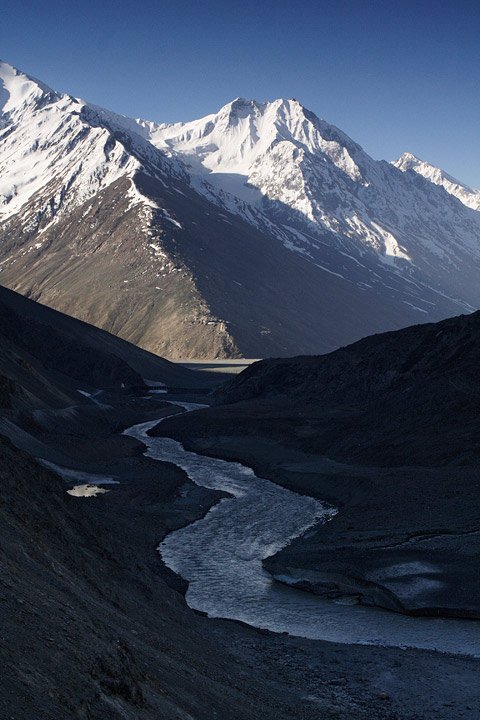
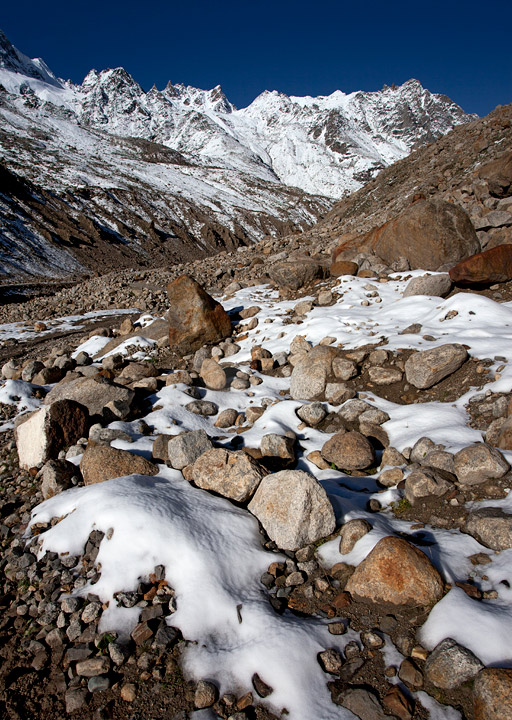
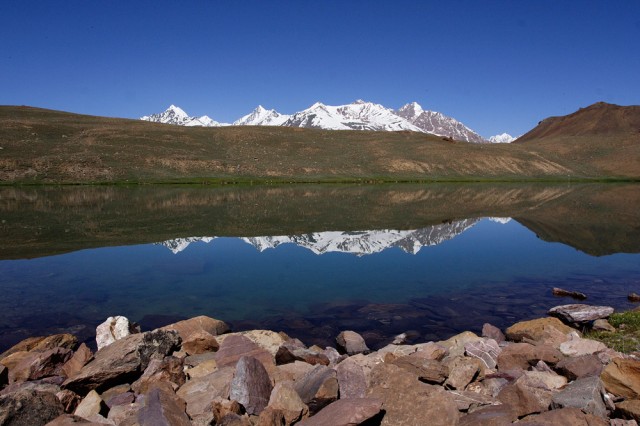
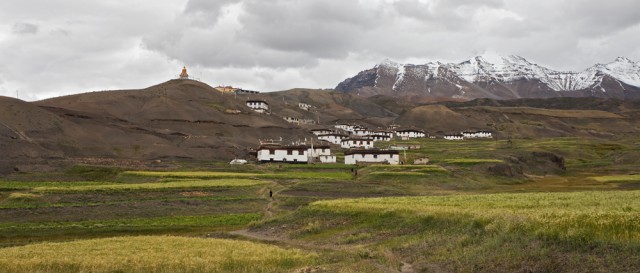
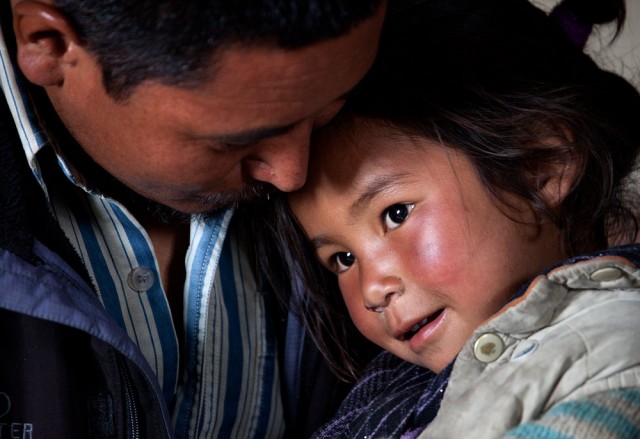
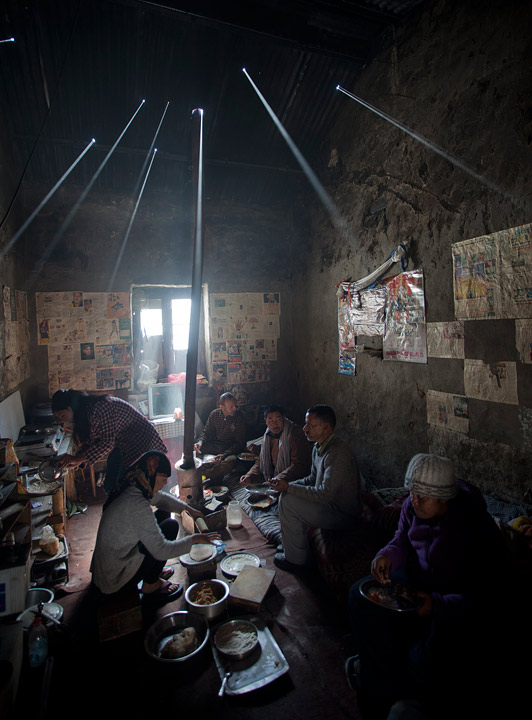
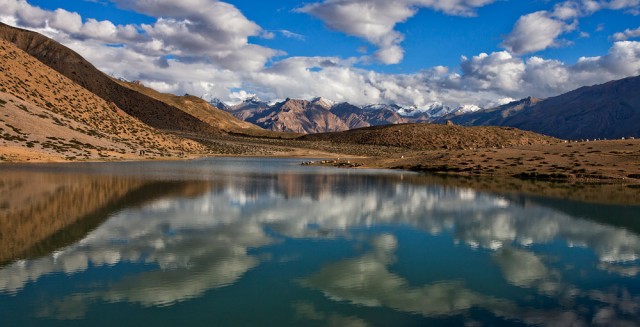
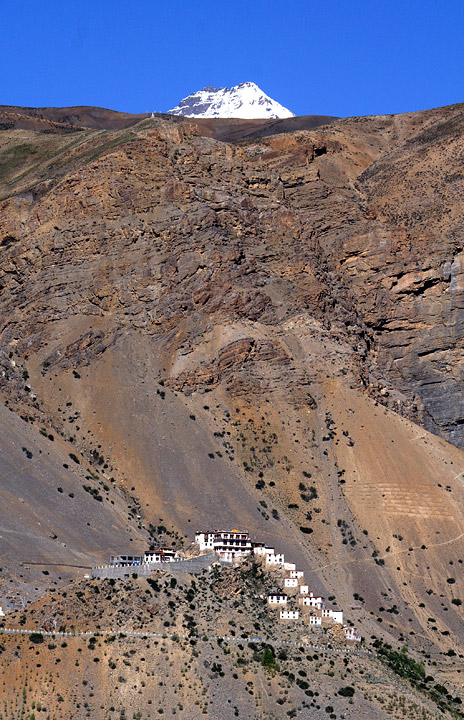
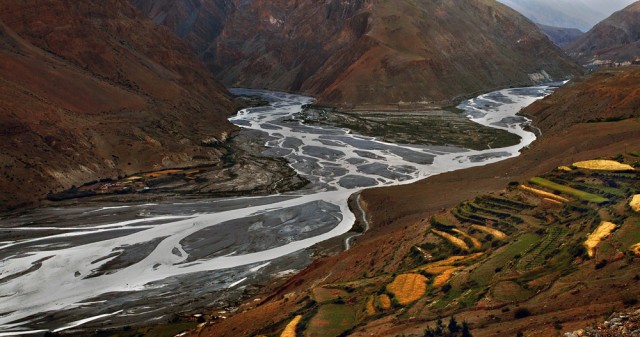
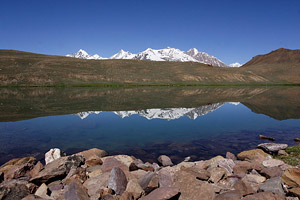 One of the still unexplored and insanely beautiful stretch of the Indian Himalayas, Lahaul and Spiti is a valley of stark landscapes and high snowy peaks stretching to the sky. Gurgling rivers and crystal clear lakes dot the highlands of Lahaul, while an ancient civilization has survived for nearly thousand years and has preserved its culture against the onslaught of modernity in Spiti. The faraway valley connected only through a narrow road that traverses through mountains over 10,000 feet high, this region offers vistas and heritage that can keep a travel photographer in a click-frenzy for months together.
One of the still unexplored and insanely beautiful stretch of the Indian Himalayas, Lahaul and Spiti is a valley of stark landscapes and high snowy peaks stretching to the sky. Gurgling rivers and crystal clear lakes dot the highlands of Lahaul, while an ancient civilization has survived for nearly thousand years and has preserved its culture against the onslaught of modernity in Spiti. The faraway valley connected only through a narrow road that traverses through mountains over 10,000 feet high, this region offers vistas and heritage that can keep a travel photographer in a click-frenzy for months together.






